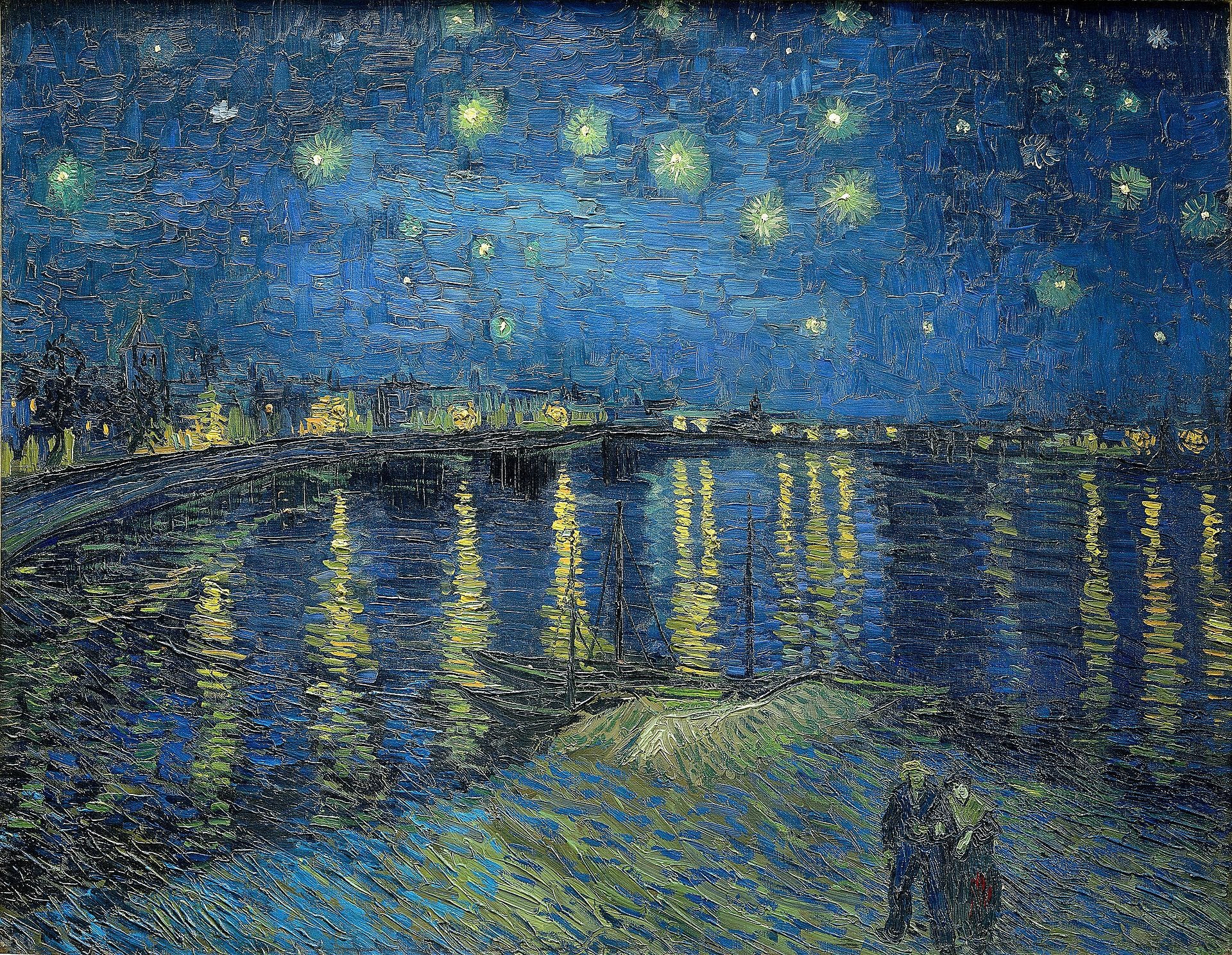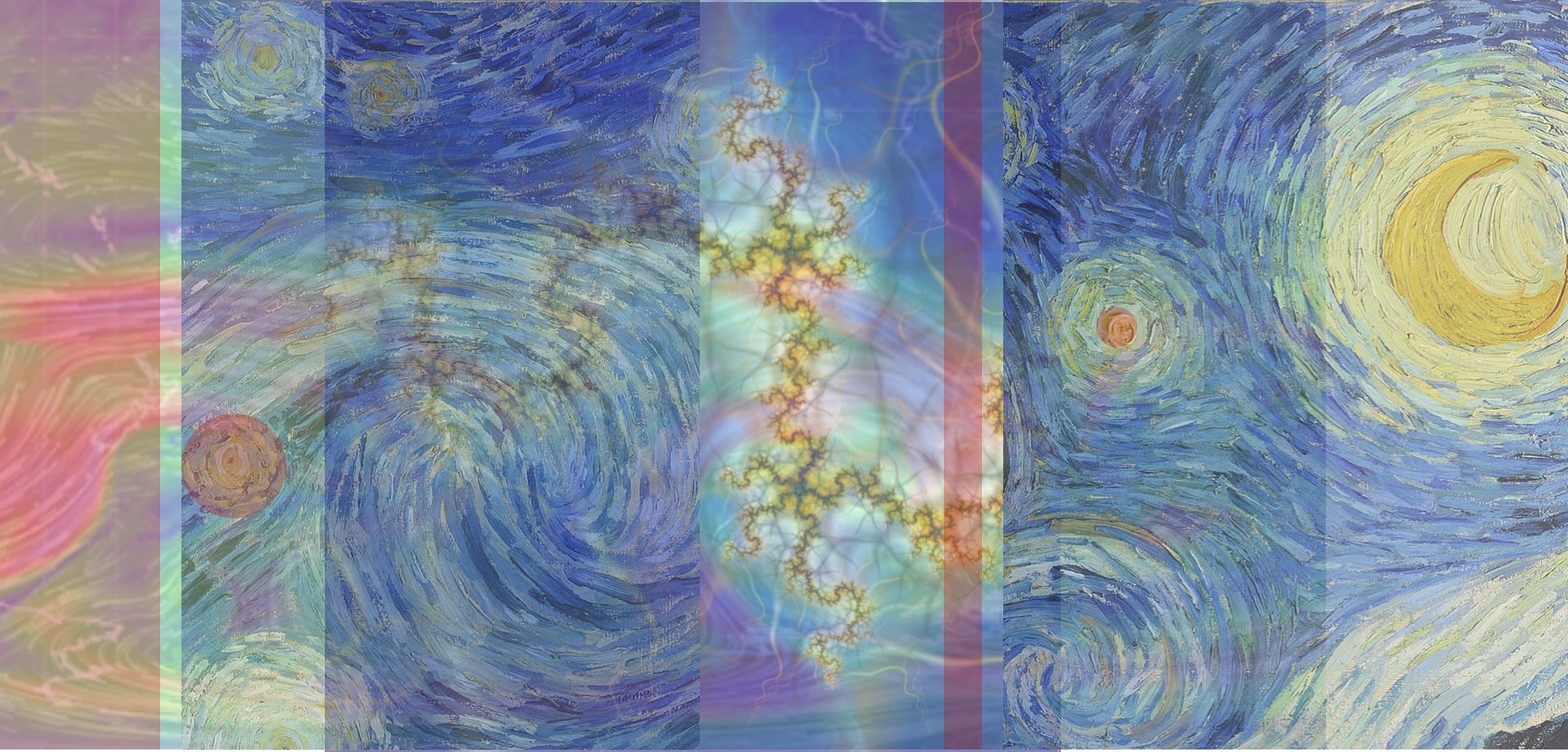Hello Interactors,
We’re officially in the summer season here in the northern hemisphere, and that means we transition to physical geography. Much attention has been given to the staggering heat in the U.S. lately, so I thought I’d start there.
Please give me like, if you like. And share if you dare!
Now let’s go…
On June 19, 1889, Vincent van Gogh wrote in a letter to his brother,
"Finally, I have a landscape with olive trees and also a new study of a starry sky."
It is largely believed van Gogh was referring to his now famous painting, ‘The Starry Night.’
The date of this painting closely corresponds to the month and day of the recent heatwave across much of the United States. It serves as a poignant reminder of the passage of time and the centuries of human-induced climatic change that separate us. Astronomers have confirmed the date of that painting by noting Venus would have been visible in the night sky, which appears as the brightest moon in the painting.
On June 20th, 2023, meteorologist Jeff Beradelli out of Tampa Florida tweeted:
“When I look at this jet stream the word insane comes to mind. It's even more astonishing when you consider it's mid June! This configuration, likely enhanced by climate heating, is fueling a record heat dome so extreme that even experts are astonished!”
Which prompted Pennsylvania State University's climate scientist, Michael Mann, to respond.
“I'm honestly at a loss to even characterize the current large-scale planetary wave pattern. Frankly, it looks like a Van Gogh”
Mann poetically likened the image of jet stream configurations to the vivid brushstrokes of van Gogh's masterpiece. This analogy underscores the significance climate scientists attach to understanding atmospheric intricacies. The behavior of the jet stream, a sinuous belt of air encircling the Northern Hemisphere, has become enigmatic, eluding conventional expectations, and impacting extreme weather events.
The jet stream's undulating pattern exerts considerable control over climatic conditions in North America. However, recent deviations from its usual behavior have led to enduring heatwaves and other extreme weather events, affecting millions of people. Scientists attribute these phenomena to the influence of climate change, which distorts the flow of the jet stream, trapping regions in prolonged periods of extreme heat. This raises concerns about the frequency and intensity of future extreme climatic episodes.
Amidst the exploration of the jet stream and its effects, questions arise about our representation and understanding of the Earth. Satellites have revolutionized data capture and analysis, offering invaluable tools for various applications. However, feminist geographers and critical remote sensing scholars argue that these technologies should go beyond mere data capture and prediction. They propose using satellite imagery and data to explore different perspectives and imagine alternative worlds, challenging traditional views of representation.
Researchers Sophie Dyer and Sasha Engelmann call for a polyperspectival image of Earth, characterized by a single Earth depicted from multiple perspectives.1 This notion, linked to fractals, emphasizes the complexity and interconnectedness of the Earth's systems.
They echo environmental humanities scholar Thomas Lekan, who offers a visual grammar of "fractal topographies" that accounts for the complexity unfolding at different scales of analysis. This view challenges the desire to homogenize by merging local data, complete with climatic and meteorological effects, into a more detached, abstracted, and aggregated image resulting from global satellite feeds. Conventional imagery thinks globally but does little to cause us to act locally. New approaches call for inter-mediations between Earth sensing processes, massive digital datasets, and the visual products and perceptions they can produce.
These researchers also recall the work of Wilson Harris, a Guyanese writer known for unconventionally using multiple narrators and intermingling points of view. He further emphasizes the importance of fractals in acknowledging repetition, connection, and specificity without erasing diversity. He wrote,
"Fractal scaling is used here precisely because of its specificity: it highlights dynamic, shifting relationships, but at the same time insists on a measurable self-similarity... this allows one to insist on the partiality of self-similarity, that is, to see repetition and connection over time and space without a complete identification that would remove diversity and specificity."
Van Gogh's "Starry Night" exemplifies both the polyperspectival and fractal-like qualities in its composition and representation. The painting incorporates multiple viewpoints, offering a sense of depth and dimension. Its swirling brushstrokes and vibrant colors create a rhythmic pattern resembling fractal geometries found in nature. Like the Earth's systems, the painting invites viewers to engage with it on multiple levels, appreciating its beauty and symbolism while contemplating diverse interpretations.

Perhaps unknowingly, Michael Mann’s nod to van Gogh invites us to consider these possibilities. By merging multiple perspectives and fractal-like elements, "Starry Night", like many other Impressionist paintings, presents a multi-layered representation of the natural world, reflecting its complexity and interconnectedness.
This aligns with the goal of many climate scientists and researchers who look to move beyond simplistic notions of abstract uniformity afforded by normalized aggregated data to embrace more inclusive and nuanced understandings. Van Gogh's artwork serves as a reminder of the power of imagination and artistic expression in conveying the intricacies of our changing planet.
Earth's systems, atmospheric dynamics, and climate change calls for alternative frameworks of representation. A single Earth conceptualized through multiple perspectives using a fractal-like grammar is one way to offer new ways to capture the complexity, diversity, and interconnectedness of our planet. Van Gogh's "Starry Night" embodies these concepts through its multiple perspectives and fractal-like patterns, reminding us of the importance of embracing inclusivity, complexity, and the transformative power of imagination in our evolving understanding of the Earth.
Open-weather: Speculative-feminist propositions for planetary images in an era of climate crisis Sasha Engelmann, Sophie Dyer, Lizzie Malcolm, Daniel Powers. Geoforum. 2022.













